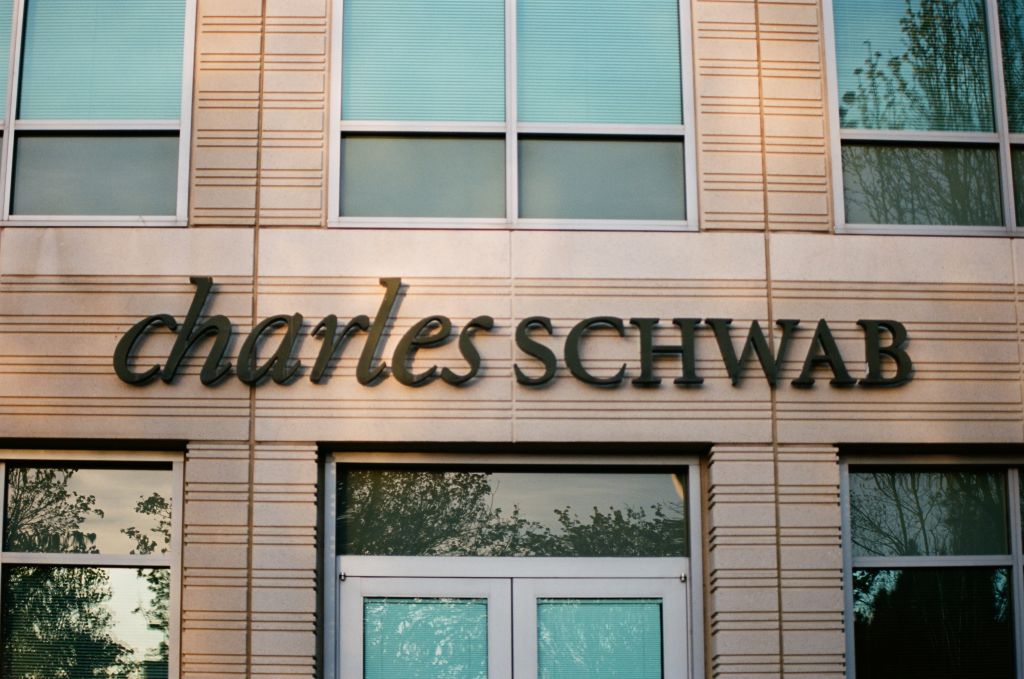
Robotic weapons? Terrifying. Robo cars? Controversial. Robo investment managers? They're a great way to start or continue investing.
In the 15 years since their introduction, computer programs that automatically design and maintain portfolios tailored to an individual's goals and risk tolerance have grown rapidly. Robo advisers currently manage more than $500 billion of investors' money.
One reason for their success is that they can steer investors away from emotion-driven mistakes. "When an investment doesn't do as well as we'd like, or the headlines are screaming, the best thing investors can do is stay the course and rebalance their portfolio, if necessary. A robo adviser can be really helpful since it can do that automatically," says Bradley Hilton, an Atlanta-based certified financial planner.
From just $107.88 $24.99 for Kiplinger Personal Finance
Become a smarter, better informed investor. Subscribe from just $107.88 $24.99, plus get up to 4 Special Issues

Sign up for Kiplinger’s Free Newsletters
Profit and prosper with the best of expert advice on investing, taxes, retirement, personal finance and more - straight to your e-mail.
Profit and prosper with the best of expert advice - straight to your e-mail.
Research published last year found that do-it-yourself investors who switched to a low-cost robo service that also offers access to human advisers (known as a hybrid service) ended up with more-diversified portfolios that were less vulnerable to significant losses and earned higher risk-adjusted returns.
The researchers – Georgetown University finance professor Alberto Rossi and Stephen Utkus of the University of Pennsylvania – also found that robo customers spent less time dealing with their investments, gaining an average of six hours a year of free time.
To help you determine whether a robo investment option is right for you, Kiplinger has analyzed 10 major robo firms' offerings, costs and, with help from robo-tracker Condor Capital Wealth Management, portfolio returns. But before you zero in on specific robo offerings, consider some general guidelines.
Shop for the right service. Think about the level of interaction you're comfortable with and whether your circumstances require particular expertise.
Most – though not all – robo firms offer at least two levels of service: basic automated investment management and a hybrid service in which portfolio management is computerized but humans are available by phone or e-mail.
If you want the human touch, make sure your robo plan offers experts who can address your specific questions. Some firms offer access only to investment advisers, while others offer access to certified financial planners who can help with broader financial issues, such as budgeting.
Robo firms are also increasingly adding services for specific investing populations, such as assistance for retirees looking for tax-smart ways to start cashing out or, for some clients, automatic tax-loss harvesting.
Michael Finke, professor of wealth management at the American College of Financial Services, says some of the new services are worth seeking out. For example, he suggests most clients would be well advised to opt for robos that offer "glide path" services that automatically shift your portfolio toward safer investments as you near retirement or other savings goals.
Keep an eye on costs. Minimum investment requirements are reasonable at most robos. Betterment and Fidelity let you open accounts for free. The others we reviewed require anywhere from $50 to $5,000 for a basic account, and $20,000 to $100,000 for premium services such as access to human advisers.
As for fees, all-in annual charges for robo advice can run from zero to almost 1% of the value of your portfolio. (Currently, some firms are also offering sign-up bonuses or matching offers that can either reduce some fees or boost your contributions, as you'll see below.)
Fees are typically broken down into two types. The first is familiar to most investors – annual expense fees for the management of the exchange-traded funds or mutual funds that make up the portfolio.
Condor Capital, a money management firm that has invested about $500,000 to test 35 different robo portfolios at 25 firms, says the average expense ratios for the robo portfolios we've included here range from 0% at Fidelity to 0.17% at Charles Schwab. In comparison, the average expense ratio for an exchange-traded index fund is 0.15%, according to the Investment Company Institute.
There's more variation in what firms charge to cover the additional costs of portfolio management software and providing financial planners. Most robos charge an additional annual expense fee, generally ranging from 0.15% to 0.45% of the value of the portfolio for the basic robo service and from 0.30% to 0.85% for hybrid services.
Alternatively, some firms charge monthly subscription fees ranging from $3 to $30 depending on the level of service.
Schwab's basic robo service is an exception. It charges no management fee but attempts to earn its costs back by putting about 10% of each portfolio in a bank account that matches the yield on a Schwab money market mutual fund.
Pay attention to portfolios. Robo portfolios are generally assembled using exchange-traded funds, though some firms also add in mutual funds.
Comparing returns from competing firms is difficult because they use different algorithms to adjust the percentages of U.S. and international stock and fixed-income funds for each client.
To get a general sense of the performance of each robo, Condor Capital tests portfolios that it deems moderate risk, which means they generally aim for an allocation of 60% stocks and 40% bonds. But variations in strategies mean the portfolios analyzed here have stock allocations ranging from 57% to 67%.
The average 2024 return for this group of portfolios was 10.1%, compared with 11% for a hypothetical combination of 60% in a broad global stock index fund and 40% in a broad U.S. bond index. Over the five years through 2024, the robos notched an annual average return of 6.3%, compared with 6.2% for the combined indexes.
There were some notable variations, however. SoFi's growth-stock-heavy portfolio returned 13.2% last year. Schwab's global portfolio, laden with cash and international stocks, returned 7.4%.
Wealthfront's core portfolio has a comparatively low allocation to international stocks, which have lagged U.S. stocks for several years. Of the robo portfolios reviewed here, it was the top-performing portfolio over the past five years, returning an annualized 7.6%.
In general, the portfolios that have emphasized international stocks, cash and value stocks have lagged over the past couple of years, says David Goldstone, Condor's manager of investment research. But those asset classes improve portfolio diversification, notes Finke, of the American College of Financial Services, which should provide more-stable long-term returns.
With these overall observations in mind, we took a closer look at the robo advisers listed below, in alphabetical order. Returns and portfolio allocations are as of year-end 2024; other data are as of January 31.
Acorns

Acorns helps its customers invest more by rounding up their debit card transactions and sweeping the change into portfolios that are mostly made up of low-cost index ETFs from BlackRock. Acorns does not offer personalized financial advice from human planners. But among the extras you get from its $12-a-month "Gold" service are a 1% match for contributions to a child's account and a 3% match to an adult's IRA.
Acorns offers nine preset portfolio options, including several with exposure to a bitcoin futures ETF and four with funds that promote environmental, social or corporate governance practices. It also allows investors to further personalize their portfolios by adding individual stocks and other ETFs.
The Acorns moderate-risk portfolio that Condor tracks is made up of funds with fees averaging just 0.04% a year. It has hewed closely to a 60-40 stock-bond allocation, with 30% of the portfolio's equity stake invested in international funds at the end of 2024. The portfolio returned 9.6% in 2024 and an annualized 4.9% over the past five years.
Betterment

Betterment's services include glide paths and tools to help retirees turn their investments into steady income in tax-smart ways.
And investors can sign up for automatic tax-loss harvesting, which involves computer programs that automatically sell money-losing investments and replace them with similar investments that are just different enough to pass the IRS' rules against gaming the system.
Done correctly, the losses can reduce your tax bill without reducing returns. It takes $100,000 to qualify for Betterment's hybrid tier and gain telephone access to certified financial planners.
Betterment offers 10 preset portfolios, including choices that focus on environmental improvements, technology, or municipal bonds, which pay interest that's free of federal (and some state) taxes. Investors can also add a cryptocurrency fund to their mix. Portfolios are typically made up of low-cost funds offered by Goldman Sachs, State Street and Vanguard.
Betterment's moderate-risk portfolio has an average expense ratio of 0.08%, according to Condor. Two-thirds of the portfolio is invested in stocks, and slightly more than one-third of those are international shares. The portfolio returned 10.1% in 2024; it has posted an annualized 5.8% over the past five years.
Meanwhile, Betterment will take over the assets in Ellevest's automated investment business in April. The female-focused financial services firm announced in late February that it is discontinuing its robo-adviser offerings to focus its efforts on wealth management and financial planning services.
E*Trade Core Portfolios

This Morgan Stanley unit only offers automated investing options. There is no hybrid level, but E*Trade does offer other services. Investors with as little as $500 can enroll in the firm's tax-loss-harvesting program at no extra charge, for instance.
Investors can choose from three strategies: an all-index portfolio, an ESG portfolio and a "smart beta" portfolio aimed at boosting returns by mixing in funds focused on stocks that Morgan Stanley analysts believe to be undervalued.
The ETFs in the portfolio that Condor tracks have an average expense ratio of 0.05%. The portfolio ended 2024 with an allocation of 61% in stocks (28% of those international) and returned 10.6% for the year. It returned 5.8% annualized over the past five years.
Fidelity Go

Fidelity Go is the lowest-cost and simplest option for beginning investors. It is free for investors with less than $25,000. Once your portfolio reaches $25,000, you'll be charged 0.35% a year and get access to financial coaches. Among the services Fidelity offers is an optional glide-path program it calls Smart Shift.
Fidelity has a menu of 16 strategies (eight each for taxable and tax-protected accounts) that range from conservative (80% bonds) to aggressive growth (100% stocks). All of its robo portfolios are made up of Fidelity's Flex index funds, which charge no annual expense fee. Fidelity does not offer cryptocurrency or other portfolio personalization options.
Fidelity Go's moderate-risk portfolio stays close to a 60-40 stock-bond split, with foreign companies accounting for 30% of the stock allocation. Condor's Fidelity portfolio is less than $25,000 and so has no fees subtracted. It has an above-average record among this group, returning 11.6% in 2024 and an annualized 7.2% over the past five years.
Merrill Guided Investing

Merrill has a comparatively complicated pricing plan. Its sticker prices are the highest of the 10 companies on this list, but clients who participate in parent company Bank of America's Preferred Rewards program can get as much as 0.15% knocked off its annual fees. In addition, Merrill is offering a sign-up bonus of a six-month fee waiver.
All Merrill customers can have the robo automatically harvest tax losses. Hybrid customers are assigned dedicated advisers, but not all are CFPs, so they may not be able to address broader topics such as taxes or planning.
Unlike most of its competitors, Merrill actively manages its portfolios. Chief investment office staff choose sector- and style-focused ETFs, such as the iShares Core S&P U.S. Growth ETF (IUSG), which they believe will beat broader indexes.
In all, Merrill offers 25 growth-oriented portfolios and another 18 income-focused options for retirees who are starting to spend down their assets.
The average expense ratio of the moderate-risk portfolio tracked by Condor was 0.06%. As of year-end, 60% of the portfolio was in stock funds, and almost one-fourth of that was international. The portfolio returned 10.2% in 2024 and an annualized 6.5.% over the past five years.
Schwab Intelligent Portfolios

Schwab's free robo offers basic services to beginners, but those with larger portfolios can access more services. Investors with at least $50,000 can sign up for automatic tax-loss harvesting, for example. And those with $25,000 can opt for its premium service, which provides unlimited phone access to CFPs. It charges a $300 initial fee and then $30 a month.
Schwab offers three investing strategies – global, U.S. and income-focused. The firm builds its portfolios from a menu of more than 50 ETFs, most of which are Schwab's.
The funds in the global portfolio that Condor tracks had an average expense ratio of 0.17%. The portfolio had a hefty 11% allocated to cash, and of the 61% in stocks, almost half was invested in international shares. That allocation has hurt performance recently. The global portfolio returned 7.4% in 2024, the lowest for the robo portfolios reviewed here. Its five-year average return, 5.3%, is also below the group average.
Condor also tracks Schwab's domestically focused portfolio (which still invests 24% of its stock allocation overseas), and it did much better, returning 9.1% last year and 6.9% annualized over the past five years. Its expense ratio is 0.12%
Sofi Automated Investing

SoFi, long one of the few free robo services, added a 0.25% annual fee in November 2024. SoFi still offers free phone access to CFPs.
And customers can choose from three kinds of portfolios, which are assembled using mostly BlackRock and Vanguard ETFs: "classic," "classic with alternatives" and "sustainable."
The alternatives strategy includes small holdings in funds such as BlackRock's Global Equity Market Neutral Fund, which balances bullish investments with short sales of stocks the managers believe are likely to drop.
The SoFi portfolio reviewed here returned 13.2% last year and an annualized 7.5% over the past five years, but Condor's Goldstone warns that the new fees SoFi added in November will eat into future returns.
Vanguard Digital Advisor

Vanguard, which popularized low-cost index mutual funds, offers some of the lowest-cost hybrid robo advice options. Its Personal Advisor service, available to those with portfolios of at least $50,000, charges a maximum of 0.30%.
Vanguard has a sliding fee schedule, stepping down to just 0.05% for portfolios with at least $25 million. And it offers glide paths, retirement-planning tools and tax-loss harvesting to all robo customers. Premium customers with at least $500,000 are assigned a dedicated CFP.
Vanguard offers three major types of portfolios, all built with in-house mutual funds and ETFs. One option contains only index funds, one contains a mix of index and actively managed funds, and a third is an ESG portfolio. The actively managed portfolio includes funds such as the Vanguard Capital Opportunity Fund (VHCOX), which has returned an annual average of about 12% over its 30-year history and is currently closed to retail investors.
The all-index-fund portfolio that Condor tracks has an average expense ratio of 0.04%. A little more than half of the portfolio was recently allocated to stocks, and 30% of that stake was international. The portfolio returned 9.8% in 2024, slightly below the average for the group. Condor does not have five-year data for its Vanguard robo portfolio.
Wealthfront

One of the few remaining pure robo options, Wealthfront offers only automated services. Among its featured offerings is automatic tax-loss harvesting within its portfolios of BlackRock, Schwab and Vanguard ETFs. For those with portfolios of at least $100,000, Wealthfront offers direct indexing, a strategy in which computer algorithms purchase a sampling of the stocks that make up the S&P 500 index, then execute more tax-loss harvesting on the individual-stock level.
Wealthfront offers two standard portfolios: "classic" and "socially responsible." But it provides a menu of more than 230 funds, including some cryptocurrency funds, that investors can use to personalize their portfolios.
The funds in the "classic" Wealthfront portfolio Condor tracks have an average expense ratio of 0.05%. The portfolio has hewed closely to its target allocation of 65% stocks and 35% bonds; one-fourth of the stocks are international. The portfolio returned 10.8% in 2024 and an annualized 7.6% over the past five years.
Find the best robo for you
Sure, Wall-E and the Terminator are both robots, but they would stink at each other's jobs. The same goes for robo-investment advisers. Many robo offerings are programmed to pay special attention to certain groups, so robo-curious investors can narrow their searches by zeroing in on services and portfolios that fit their needs. Use our guide for different types of investors, below:
Beginners. Fidelity Go is a completely free option for those with portfolios under $25,000. Acorns' $3-a-month plan includes a debit card that rounds up purchases and sends the change to your investment account. For $12 a month, Acorns will also match 3% of contributions to IRA accounts.
ESG investors. Acorns, Betterment, E*Trade Core Portfolios, Merrill Guided Investing, SoFi Automated Investing, Vanguard Digital Advisor and Wealthfront offer portfolios with funds that invest with an eye toward certain environmental, social or corporate governance goals.
Overseas bargain hunters. Schwab Intelligent Portfolios offer options that have a higher weighting in international stocks than do broad global market indexes.
Investors in search of outperformance. Betterment, E*Trade, SoFi and Vanguard offer portfolios aiming to beat the indexes using either actively managed funds or strategies that choose among sector- and style-focused exchange-traded funds that its analysts think could outperform the broader market.
People with questions. Betterment, Schwab and Vanguard Personal Advisor offer hybrid-tier clients telephone access to certified financial planners.
Retirees. Betterment, Merrill, Schwab and Vanguard have tools to help retirees calculate safe withdrawal rates. The first three also offer income-focused portfolios.
Set-it-and-forget-it types. Acorns, Betterment, Fidelity and Vanguard offer "glide path" services that automatically dampen the risks in your portfolio as you age.
Tax minimizers. Betterment, E*Trade, Merrill, Schwab, Vanguard and Wealthfront provide automatic tax-loss harvesting.
Note: This item first appeared in Kiplinger Personal Finance Magazine, a monthly, trustworthy source of advice and guidance. Subscribe to help you make more money and keep more of the money you make here.
Related content
Profit and prosper with the best of Kiplinger's advice on investing, taxes, retirement, personal finance and much more. Delivered daily. Enter your email in the box and click Sign Me Up.

Kim Clark is a veteran financial journalist who has worked at Fortune, U.S News & World Report and Money magazines. She was part of a team that won a Gerald Loeb award for coverage of elder finances, and she won the Education Writers Association's top magazine investigative prize for exposing insurance agents who used false claims about college financial aid to sell policies. As a Kiplinger Fellow at Ohio State University, she studied delivery of digital news and information. Most recently, she worked as a deputy director of the Education Writers Association, leading the training of higher education journalists around the country. She is also a prize-winning gardener, and in her spare time, picks up litter.
-
 Key State Tax Changes to Know for 2026
Key State Tax Changes to Know for 2026Tax Changes As 2026 begins, taxpayers across the country are navigating a new round of state tax changes.
-
 Who Said That? Match the US President to the Quotation
Who Said That? Match the US President to the QuotationWho better to give advice on aging, retirement and finances than a U.S. president? Our short quiz will determine whether you're a history buff or buffoon.
-
 When Do W-2s Arrive? 2026 Deadline and 'Big Beautiful Bill' Changes
When Do W-2s Arrive? 2026 Deadline and 'Big Beautiful Bill' ChangesTax Deadlines Mark your calendar: Feb 2 is the big W-2 release date. Here’s the delivery scoop and what the Trump tax changes might mean for your taxes.
-
 The December CPI Report Is Out. Here's What It Means for the Fed's Next Move
The December CPI Report Is Out. Here's What It Means for the Fed's Next MoveThe December CPI report came in lighter than expected, but housing costs remain an overhang.
-
 The Paradox Between Money and Wealth: How Do You Find the Balance?
The Paradox Between Money and Wealth: How Do You Find the Balance?Wealth reflects a life organized around relationships, health, contribution and time — qualities that compound differently than money in a mutual fund.
-
 Billed 12 Hours for a Few Seconds of Work: How AI Is Helping Law Firms Overcharge Clients
Billed 12 Hours for a Few Seconds of Work: How AI Is Helping Law Firms Overcharge ClientsThe ability of AI to reduce the time required for certain legal tasks is exposing the legal profession's reliance on the billable hour.
-
 General Partner Stakes: Why Investors Are Buying Into the Business of Private Equity
General Partner Stakes: Why Investors Are Buying Into the Business of Private EquityGP stakes in asset management firms offer exposure to private markets and are no longer just for the wealthy. Find out why it looks like a good year to invest.
-
 Stocks Climb Wall of Worry to Hit New Highs: Stock Market Today
Stocks Climb Wall of Worry to Hit New Highs: Stock Market TodayThe Trump administration's threats to Fed independence and bank profitability did little to stop the bulls on Monday.
-
 How Worried Should Investors Be About a Jerome Powell Investigation?
How Worried Should Investors Be About a Jerome Powell Investigation?The Justice Department served subpoenas on the Fed about a project to remodel the central bank's historic buildings.
-
 5 Golden Rules We (Re)learned in 2025 About Investing
5 Golden Rules We (Re)learned in 2025 About InvestingSome investing rules are timeless, and 2025 provided plenty of evidence demonstrating why they're useful. Here's a reminder of what we (re)learned.
-
 I'm a Financial Adviser: Here's How to Earn a Fistful of Interest on Your Cash in 2026 (Just Watch Out for the Taxes)
I'm a Financial Adviser: Here's How to Earn a Fistful of Interest on Your Cash in 2026 (Just Watch Out for the Taxes)Is your cash earning very little interest? With rates dropping below 4%, now is the time to lock in your cash strategy. Just watch out for the tax implications.
